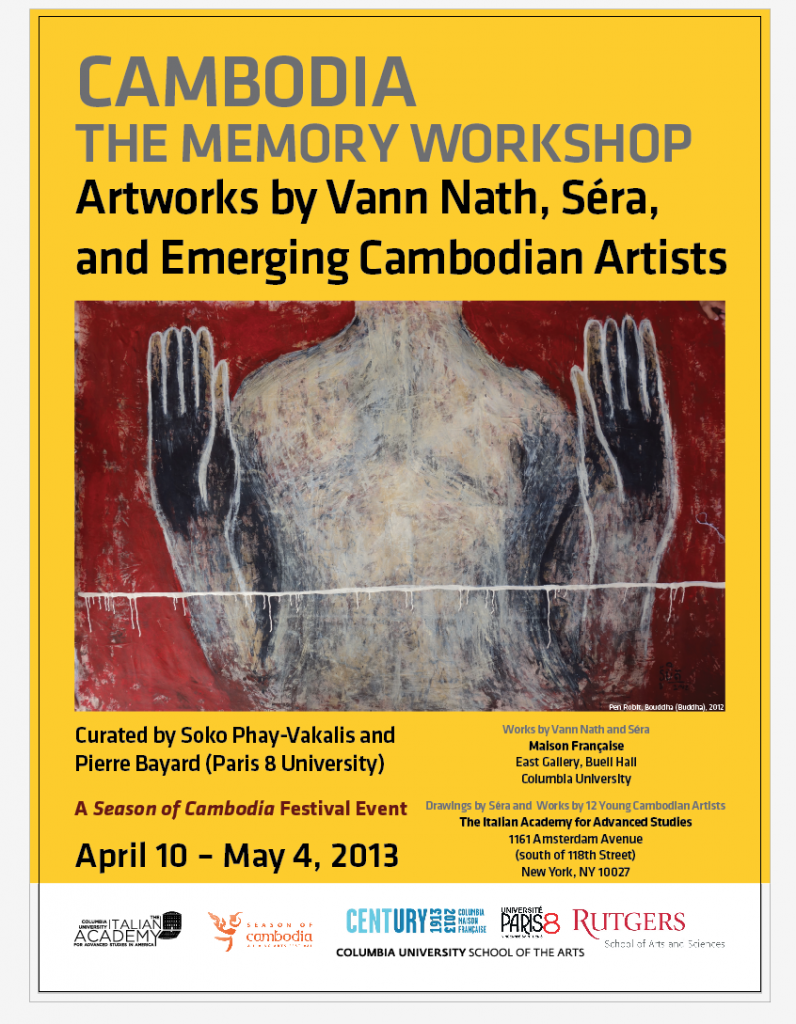Steering committee: Pierre Bayard and Soko Phay
« Creation and Postmemory », conference, April 10-12, 2013, at Columbia Maison Française
« Cambodia, The Memory Workshop: Artworks by Vann Nath, Séra, and Emerging Cambodian Artists », exhibition at Columbia Maison Francaise and The Italian Academy for Advanced Studies
The aftermath of mass murders is felt not only by the victims and their families but also by their descendants, who find themselves in the paradoxical situation of suffering the psychological effects of events they did not experience themselves. It is this transmission of trauma that the notion of postmemory – developed in 1997 by Marianne Hirsch in her book Family Frames: Photography Narrative and Postmemory – attempts to describe. Hirsch demonstrates how an indirect form of memory may develop in individuals who did not experience a traumatic event personally but feel its active presence within their family.
Since postmemory is unable to draw on precise recollections, great importance is given to imagination and creation. Art has a major part to play in this process, since in some cases it is only through the works created by survivors that subsequent generations can access the traumatic event. Art also constitutes an ideal means for later generations to attempt to imagine an unknown past and discover its implications in their lives.
Compléments d’information
– Interview de Marianne Hirsch (Université Columbia)
– Présentation de l’exposition par Soko Phay-Vakalis et Pierre Bayard
Films réalisés par Juliette Daney de Marcillac
Produits par la Maison française de Columbia
Nous remercions Shanny Pear d’avoir autorisé à mettre les films sur le site du CIREMM.
A paraître fin 2015 : Publication des actes du colloque « Creation and postmemory », sous la direction d’Emmanuel Alloa, Pierre Bayard et Soko Phay, in Literature and Trauma Studies, n°45 (hiver 2015) et n°46 (printemps 2016).

